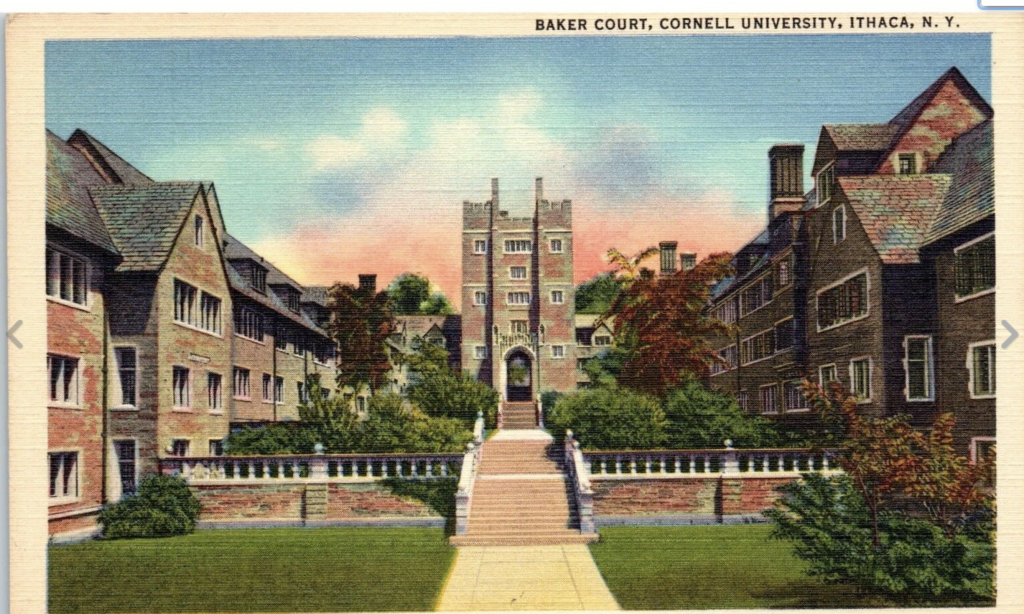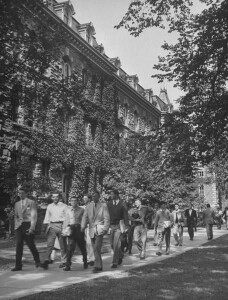
Dating.
…Co-eds, the girls from Cornell itself, are not allowed to enter the house unless there are chaperones—a married couple over 25—ant the house is registered for a week-end party so that the bar may be opened…At some universities the fraternities have “ house mothers “ to preserve civilisation and to prevent Army table-manners from creeping in…The sororities are few in number, and they have a more efficient methods of choosing new members …I have been told that in some sororities, a girl who lacks a date for an important week-end can lose much of her prestige wit the rest of the house; and it would seem that the systemic discussion of dates, which the sororities tend to encourage, contributes something to the perfect self-assurance of the American collage girl, which is even more effective that the traditional reserve of the English woman as a barrier to close acquaintance.
The college dating system is an equally interesting phenomenon. In modern America it has developed into as formal a code of behaviour as the rules of medieval chivalry and the French Courts of Love …To get a Saturday date in America it was preferable to telephone the girl on the Monday before. It appeared that it would be impolitic move to telephone on the Friday, even if hte girl has no previous engagement for Saturday she will probably refuse, to avoid the loss of prestige which would result from being without a date before Friday. Dating activities are limited by convention—the cinema and drinks afterwards, visits to a roadhouse, fraternity parties, or dances—and are usually fairly expensive…The formalisation of dating behaviour tends to restrict the norm of conservation to small talk, and since one may sometimes date a girl only once, there is no chance of any more than the most standardised small talk. There is the occasional dissatisfaction with this system, particularly the “ blind “ ,. or prearranged dates, where the parties are unknown to each other; the men complain of having to produce the same stereotyped conversation with yet another first date, and the girls of having to endure the standardised advances of another man she knows very little about…
Conclusion
I should perhaps add that the impressions recorded here are based mainly on a university which is privately endowed, among he top ten colleges of the Eastern states, and whose fees of $600 – 700 are more than $100 higher than many other comparable non-state universities in America; so that the type of student and methods of teaching may differ considerably from some of the state colleges and from the enormous universities of the Midwest…And let me add finally…that the generosity of the Americans outdoes that of any other nation I know…that American workers seem to have more ideas and certainly more initiative than most of their European counterparts; and there is an unquenchable interest here in foreigners, which gives rise to most elaborate arrangements for their welfare, and which contrasts strongly with the zenophobia generally found in Britain, even in a supposedly cosmopolitan place as London….
R. M. Healey

